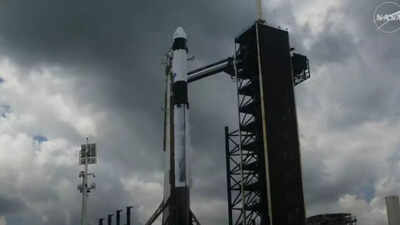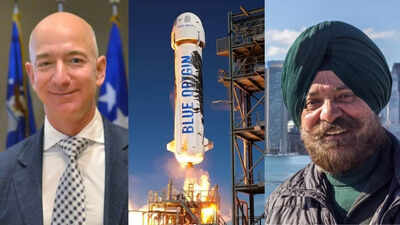NASA and SpaceX have postponed the highly anticipated Crew-11 launch to the International Space Station (ISS) due to unfavorable weather conditions in Florida. Originally scheduled for liftoff on July 31 but now the launch is rescheduled for August 1, 2025. This mission is significant not only for ferrying four astronauts from the United States, Japan, and Russia but also for making history as the first-ever NASA SpaceX launch broadcast on Netflix, expanding space exploration coverage to mainstream streaming audiences. The six-month mission will focus on microgravity research, scientific innovation, and operational handover aboard the ISS, marking another milestone in NASA’s Commercial Crew Programme with SpaceX.
NASA SpaceX Crew-11 launch postponed due to adverse weather
The SpaceX Crew-11 mission, scheduled to ferry four astronauts to the International Space Station (ISS), faced an unexpected delay due to adverse weather conditions over Florida’s Space Coast. The initial launch was planned for 9:40 PM IST on July 31, 2025, but deteriorating cloud cover and high winds at Kennedy Space Center forced mission controllers to call off the attempt. The launch is now rescheduled for 11:43 AM EDT (9:13 PM IST) on August 1, 2025. Launch delays due to weather are not uncommon, as spacecraft must meet strict atmospheric and wind requirements to ensure crew safety during ascent and booster recovery.
NASA expands SpaceX launch coverage with first Netflix broadcast
In a first for the space industry, the Crew-11 launch broadcast was made available on Netflix, marking a significant expansion of space content into mainstream entertainment platforms. Traditionally, NASA launches are streamed on NASA TV, NASA+, YouTube, and Amazon Prime Video, catering mainly to space enthusiasts. With Netflix joining the list, the audience reach increased dramatically, attracting younger and non-traditional viewers who may not typically tune in to live space launches. This move reflects a growing effort to make space exploration more accessible, engaging, and globally recognised, much like major sports events or high-profile entertainment premieres.
NASA Crew-11 astronaut team composition
The Crew-11 mission is notable for its international crew, showcasing global collaboration in space exploration:
- Zena Cardman (NASA) – Serving as Mission Commander, she leads mission operations and overall crew coordination.
- Mike Fincke (NASA) – The mission’s Pilot, responsible for spacecraft control and navigation tasks.
- Kimiya Yui (JAXA, Japan) – A Mission Specialist focusing on scientific experiments and station maintenance.
- Oleg Platonov (Roscosmos, Russia) – Another Mission Specialist tasked with systems support and Russian module operations.
This diverse crew composition underscores how the ISS acts as a platform for multinational research and cooperation, uniting countries in pursuit of common scientific goals.
NASA Crew-11 astronauts 6 months mission aboard the ISS
Once docked, the Crew-11 astronauts will begin a six-month science mission aboard the ISS. Their research will focus on microgravity studies, which allow scientists to explore biological, chemical, and physical processes in unique conditions. Planned experiments include biotechnology advancements, space medicine, Earth observation, material science innovations, and life-support technology development for future deep-space missions. The team will also conduct maintenance and upgrades to ISS systems, ensuring the station remains operational and efficient. This rotation replaces the crew stationed since March 2025, ensuring a continuous human presence in space and the smooth handover of operational duties.
Why the SpaceX Crew-11 launch was delayed
Despite early forecasts showing favorable weather, increasing wind speeds and thickening clouds violated launch safety criteria, leading to the decision to delay. Acting NASA Administrator and US Transportation Secretary Sean Duffy personally attended the launch attempt, emphasising the mission’s significance. Launch postponements are common in crewed missions because weather can affect rocket stability, trajectory accuracy, and emergency abort options. Even slight atmospheric disturbances could compromise astronaut safety or damage rocket components. By delaying rather than risking a marginal weather window, NASA and SpaceX demonstrated their commitment to “safety first” policies, ensuring optimal conditions before liftoff.
Falcon 9 and Dragon spacecraft: Journey to the ISS
The Crew-11 mission uses SpaceX’s Falcon 9 rocket, a partially reusable two-stage launch vehicle, to propel the Crew Dragon spacecraft into orbit. After liftoff, Falcon 9 will accelerate Dragon to 17,500 mph (28,000 km/h), achieving the velocity needed for low Earth orbit. Once separated, Crew Dragon will rely on its onboard Draco thrusters to adjust its trajectory and rendezvous with the ISS autonomously. The docking process is carefully timed to ensure a smooth connection with the station’s docking port. This flight marks the 11th routine crew rotation under NASA’s Commercial Crew Programme, continuing the push for cost-efficient, private-sector-supported human spaceflight.Also Read | Solar Eclipse rumours clarified: Will August 2, 2025 really bring ‘6 minutes of darkness’? NASA answers after viral buzz






